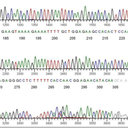Pharmacologic management of isolated low high-density lipoprotein syndrome.
Ключови думи
Резюме
High-density lipoprotein (HDL) cholesterol is a heterogeneous group of lipoproteins exhibiting a variety of properties like prostacyclin production stimulation, decrease in platelet aggregation, endothelial cell apoptosis inhibition, and low-density lipoprotein oxidation blockade. Epidemiologic studies have shown an inverse relation between HDL cholesterol levels and cardiovascular risk. Low HDL cholesterol is associated with increased risk for myocardial infarction, stroke, sudden death, peripheral artery disease, and postangioplasty restenosis. In contrast, high HDL levels are associated with longevity and protection against atherosclerotic disease development. Given the evolving epidemic of obesity, diabetes mellitus, and metabolic syndrome, the prevalence of low HDL will continue to rise. In the United States, low HDL is present in 35% of men, 15% of women, and approximately 63% of patients with coronary artery disease. Data extracted from the Framingham study highlight that 1-mg increase in HDL levels decreases by 2% to 3% the risk of cardiovascular disease. There is no doubt regarding clinical importance about isolated low HDL, but relatively few clinicians consider a direct therapeutic intervention of this dyslipidemia. In this sense, lifestyle measures should be the first-line strategy to manage low HDL levels. On the other hand, pharmacologic options include niacin, fibrates, and statins. Fibrates appear to reduce risk preferentially in patients with low HDL with metabolic syndrome, whereas statins reduce risk across all levels of HDL. Torcetrapib, a cholesteryl esters transfer protein inhibitor, represented a hope to raise this lipoprotein; however, all clinical trials on this drug had ceased after ILLUMINATE, RADIANCE and ERASE trials had recorded an increase in mortality, rates of myocardial infarction, angina, and heart failure. In the near future, drugs as beta-glucans, Apo-A1 mimetic peptides, and ACAT inhibitors, are the new promises to treat this condition.


